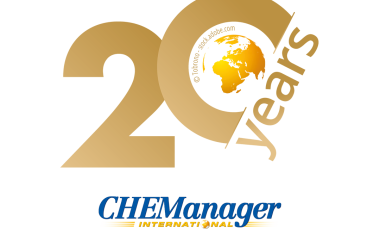Non-compliance is on the Rise

Steady Increase - All who follow industry trends will have noticed an increase in regulatory actions related to non-compliance issues. We can see this in the increased issuance of inspectional observations - or 483s - by the U.S. Food and Drug Administration (U.S. FDA) and by the withdrawal of certificates of suitability (CEP) certifications by the European Directorate for the Quality of Medicines and Healthcare (EDQM).
The first question to be addressed is whether this increase is due to a demand for a higher level of compliance as reflected by more demanding regulations, a more rigorous application of existing regulations or a lowering of standards within the companies?
An inspection of the nature of the non-compliance letters reveals that many of the issues raised are absolutely traditional, that is, issues that were prevalent in the 1990s and that had presumably become so well understood as to be virtually eradicated within the established industries. However, analysis of U.S. FDA data indicates that one of the major issues over the last two years has related to quality control units, with failure to review and resolve incidents adequately including: extending investigations to other lots affected; undocumented and/or unsubstantiated investigation conclusions; and lack of or inadequate corrective or preventive actions taken, including recalls.
Imprecise Wording
Two other major citation areas have been failure to adhere to production procedures and inadequate or failed validation of production procedures and analytical methods.
A significant increase was also noticed in training deficiencies, and here we can see a clue as to what is happening. The regulations state in 21 CFR 211.25(a): "Training in current good manufacturing practice shall be conducted by qualified individuals on a continuing basis and with sufficient frequency to assure that employees remain familiar with GMP requirements applicable to them."
Inspection of this simple regulation reveals three words that are somewhat imprecise: "qualified individuals", "continuing basis" and "sufficient frequency." The increase of actionable events is simply a reflection of the authority's interpretation of these terms. For example, the head of a department may actually be a very poor trainer, or sufficient frequency may not be once every five years. A most astute phrase became popular with the FDA: "trained or really trained?"
Inaccurate Information And Heparin
Much of this more rigorous application of the existing regulations has been as a reaction to considerable criticism that has been levelled at the U.S. FDA. The U.S. Government Accountability Office (U.S. GAO) - the investigative branch of Congress - issued severe criticisms of the FDA, including comments that they have several separate data bases of manufacturing organizations, one listing 3,000 approved companies and another having approximately 6,800 establishments.
A not insignificant number have inaccurate information, including wrong names and addresses. This was highlighted by the Heparin crisis that started in 2008, where it was determined that Chinese companies that provided the starting materials used in its production had not been inspected, in part, due to confusion as to the exact names and addresses of the companies involved. Even after the crisis, which included US deaths and severe medical complications the FDA were not able to investigate some of the raw material suppliers.
The same GAO estimated that FDA may inspect about 8% of foreign establishments in a given year, and it would take the agency more than 13 years to inspect these overseas establishments once. The actions of the FDA were also called into question in that from 2002 through 2007, the agency issued warning letter following 15 overseas inspections in which serious deficiencies were identified. However follow ups were not timely and often relied on paper declarations rather than re-inspection.
At her appointment as commissioner of the FDA, Margaret Hamburg announced that the FDA would become far more aggressive by streamlining the issuance of warning letters and will follow up more quickly on assessment and follow up on corrective action after a warning letter is issued.
The Situation In Europe
The European situation is more difficult to monitor because there is no publically available data base. However, it can be seen that that since starting actual inspection of API manufacturers, the EDQM has revoked a significant number of certificates of suitability. In the second half of 2010, some 19 APIs had their certificates revoked or suspended because of either failed inspections or refusal to even allow inspection.
Thus we can see that there is a definite increase in the more rigid application of existing regulations, but this does not adequately explain the fundamental nature of the non-compliance issues.
Therefore we must ask if standards are getting lower. Certainly part of the explanation is that new companies are trying to get onto the European and U.S. markets without having done their homework. Statements such as "the investigator observed individuals in the clean area with open toe or open foot sandals, torn plastic booties, wearing no masks and wearing no gloves" or a sterile facility with " holes in the ceiling and visible light coming from the roof near the ventilation system, bubbling of the vinyl and disintegration of the wall under vinyl in the freeze dryer room, visible black mold on the wall, a poor drain system for the freeze dryer steam venting system, and a soft (spongy) wall" obviously reflect new management major lack of understanding of what is required in that they could even contemplate passing an inspection.
Non-compliance within Established Companies
However, there are sufficient non-compliance issues with well-established companies to suggest that there is a lowering of standards. Certainly times are tough for the industry, both branded companies with a lack of new products, and generic companies with more competition for less off patent products.
In an economic crisis there is an immediate cost saving reaction and quality assurance (QA) is often considered as one of the first areas for downsizing as it is a "non-profit center." The cost saving in QA can take two forms, either as a simple reduction in head count or in firing of senior (expensive) staff and replacing them with less-experienced people.
It has been suggested that such downsizing has been a root cause for the many recalls that have plagued Johnson & Johnson over the last two years. It is interesting to read the 133 page report produced by the special committee of their board of directors, which essentially found that in spite of the numerous recalls there were no red flags or indications of systemic failure that were overlooked by the board or executive team. This is an interesting conclusion when root cause analysis teaches that most root causes are as a result of senior management or policy decisions.
There are two other factors that may be related. The traditional path into QA used to be from within existing staff who had been through the mill - either senior production, engineering, quality control or analytical staff moving on to QA roles. These people had a solid, hands on knowledge of the industry and a good, all-round knowledge of the critical processes and quality attributes of the products being manufactured.
The increased complexity of the business has resulted in a great increase in specialization; where once an analytical chemist would develop, validate and use a method, we now have a development chemist, a validation expert, a technical transfer specialist etc. This specialization means that the people moving into QA do not have a broad grasp of issues that could affect quality.
The second factor is the diversion of attention of quality staff from their traditional roles to trying to come to grips with some of the new approaches including process analytical technology, quality by design and design of experiments. These new approaches, while laudable, are difficult concepts and pressure to introduce them, often from senior management who actually may not fully understand them, is certainly putting more pressure on staff responsible for ensuring compliance.
The factors discussed above affect both generic and branded companies but often it is suggested that the problem is really found in the generic industry. An alternate view is expressed that the generic industry is singled out for more rigorous treatment. This reflects more the defensive knee-jerk reaction of the generics industry rather than any hard data.
A quick check of issued 483s over the first half of the year shows some 14 issued to generics companies and two to branded companies. If one takes into account the relative number of generic to brand companies, it is clear that these figures do not reflect an undue bias in favor of generics.
What Does the Future Have in Store?
There has been a recent trend in FDA inspections to have more than the traditional two inspectors. Even five inspectors have been known to turn up, and the FDA has stated that this is an excellent way of carrying out "on the job training." Added to that, there is the pending Prescription Drug User Fee Act (PDUFA) agreement for generic registration fees that will be spent on recruiting more inspectors.
Factor in the increased cooperation between the FDA and European Medicines Agency (EMA) in terms of better communications and some joint inspections, and all companies are going to face far more inspections carried out by less and less experienced inspectors coming from different regulatory backgrounds.
Final Recommendations
- Go back to basics: Simple fundamental compliance issues must be addressed as a top priority. Only go for new concepts when you are absolutely sure that you have no hidden time bombs about to blow up in your face.
- Reduction in QA staff either in numbers or quality is a false economy: Compare it to the cost of dealing with a serious non-compliance issue and potential loss of business or destruction of a company's reputation.
- Document, document and document in good clear terms, bearing in mind appropriate root cause analysis and corrective/protective action
- Never compromise on training. If staffs are not trained adequately, then how can they perform their functions correctly?















